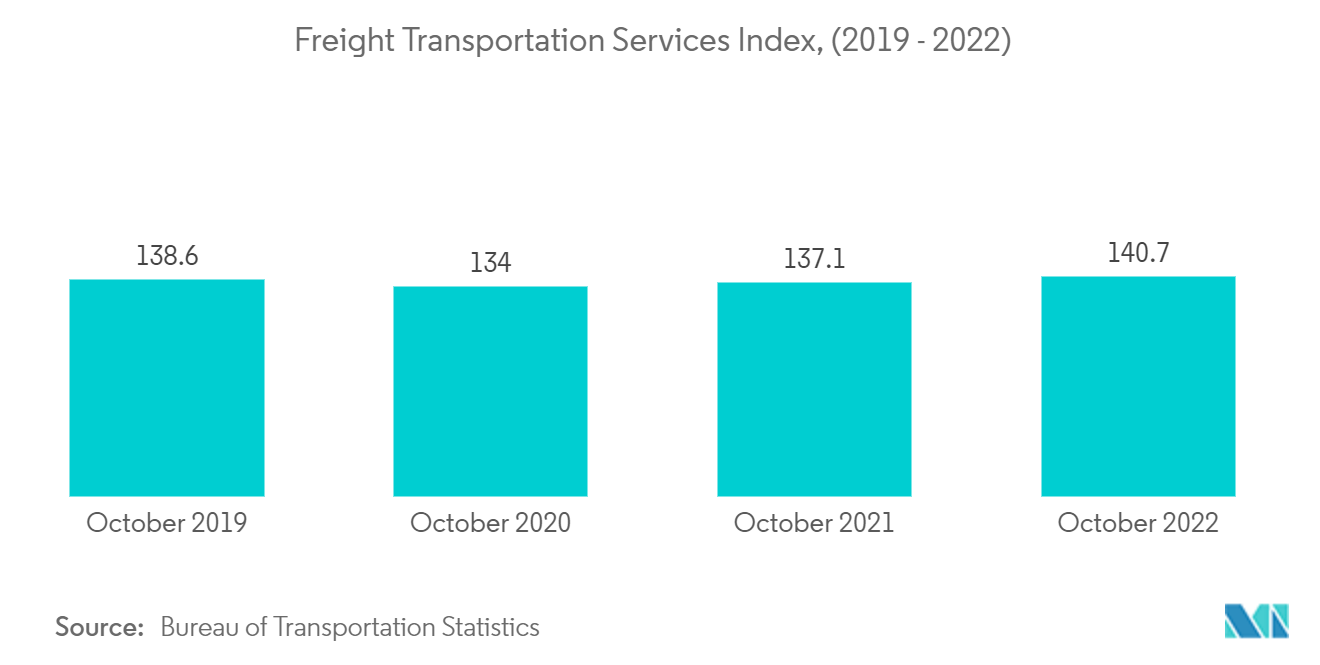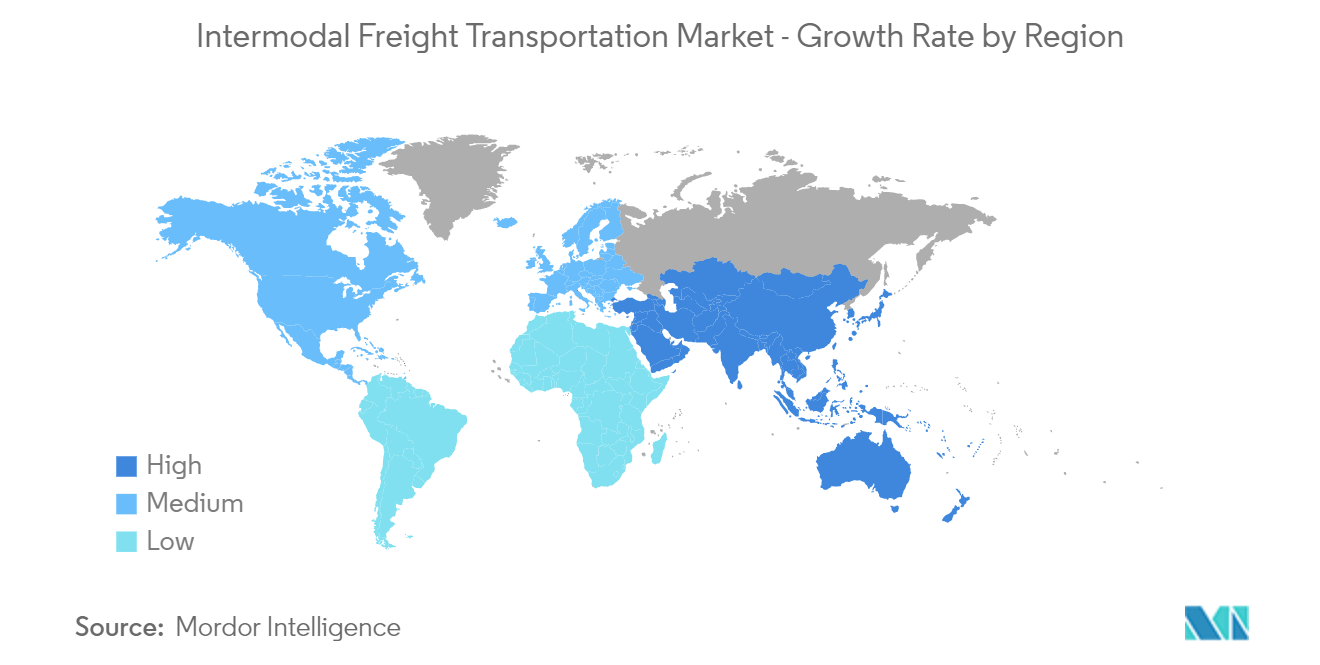Market Trends of Intermodal Freight Transportation Industry
This section covers the major market trends shaping the Intermodal Freight Transportation Market according to our research experts:
Rail and Road Transport is Expected to Hold Significant Share
- Intermodal transportation offers dependable freight shipment at a reasonable cost and might be incorporated into the current freight transportation infrastructure. The rail industry in the United States transports over 40 tons of freight per capita, and intermodal shipments are often made in 53-foot-long containers. According to CSX, one intermodal train can transport the same amount of freight as 280 trucks. Shippers examine various issues when deciding whether to use intermodal transportation, including the inefficiencies associated with railroad conversions to precision planned railroading (PSR), the availability of shipping equipment, load price, and the ongoing truck driver shortage.
- While the demand for more efficient and rapid goods shipping has risen, the rail industry has strived to enhance operations using precision-planned railroading. PSR refers to transporting the same amount of freight with fewer railcars and locomotives along a planned direct line over a rail network. Conventional trains move freight when full, but under PSR, trains start moving at a specified time regardless of whether or not the freight is there. PSR aims to enable faster speeds, longer trains, and shorter terminal dwell times. However, as the rail industry has moved to PSR, it has impacted existing shipping lanes and decreased equipment and staff.
- Railway operators in the United States and neighboring countries have strived to enhance equipment, shipping schedules, loading and unloading times, and the number of lanes to handle numerous delivery locations. The intermodal rail system in the United States stretches across the country, connecting every major port and providing some coast-to-coast service faster than the truck.Mexico has an outstanding rail infrastructure covering most of the country, with well-established rail connections near the US border. Canada has two main coast-to-coast railroads: the Canadian National Railway (CN) and the Canadian Pacific Railway (CPR).
- Technology and intermodal rail support shippers in meeting the transportation environment's difficulties. CSX Transportation has a network of more than 40 terminals. The intermodal business serves major markets east of the Mississippi and the transportation of products in numerous containers, providing corporations with service similar to trucking for shipments traveling more than 500 miles. CSX CSX Transportation surveyed transportation management system suppliers to get insight into intermodal rail transportation. Intermodal railways are more concerned with capacity and cost reductions. Adding a transportation management system, starting a multimodal conversion path, or ensuring the best use of both can help shippers achieve their goals.

North America is Expected to Hold Significant Share
- The intermodal freight transportation market in the North American region is increasingly dependent on the consumer economy's demand. The regional rail industry is concentrating on creating new intermodal services that can successfully rival over-the-road options. In February last year, Mullen Group Ltd. announced that its wholly owned subsidiaries, APPS Cartage Inc. and APPS Cargo Terminals Inc., had signed an agreement with CN to continue supplying intermodal services to APPS Transport for a period of time.
- According to IANA, overall intermodal volume will be 17.716,445 in 2022, a 3.9% decrease from 2021.Trailers dropped by 23.8% to 924,259, while domestic container volume increased by 1.6% to 8,147,044 units. Domestic equipment as a whole declined by 1.8% to 9,071,303.
The region is also witnessing significant new players entering the market. For instance, in November last year, RunBuggy OMI Inc., a digital platform that connects car shippers and transporters, announced the availability of its Hitch Transportation Management Solution (TMS). The cloud-based solution enables car shippers to seamlessly integrate and connect with their current transportation assets, whether through partners or in-house, and expand their transportation capacity with access to RunBuggy's Marketplace, a nationwide network of 17,000 verified drivers.

